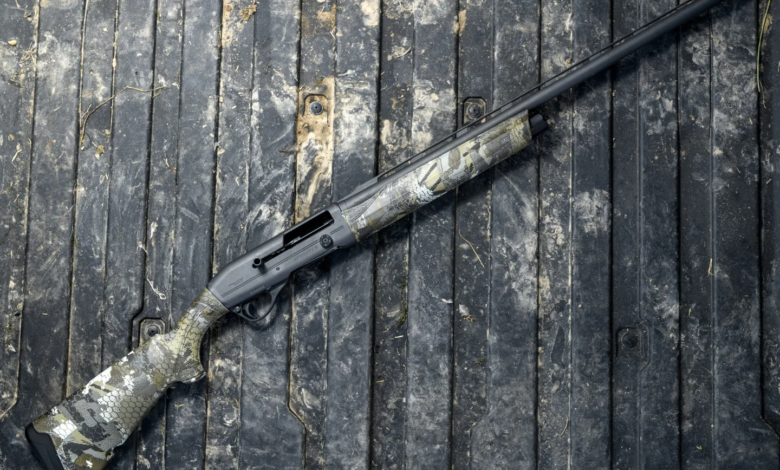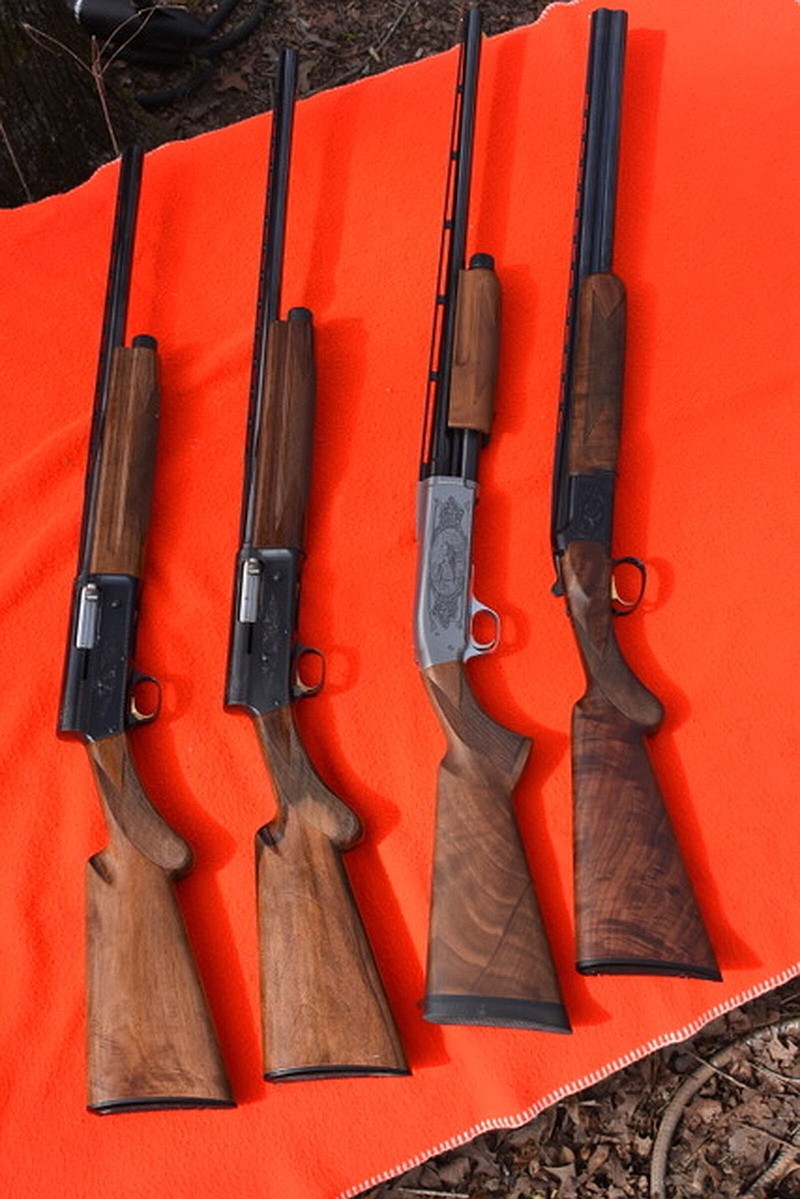Choose your shotgun: Confidence, comfort keys to finding the right firearm
With hunting seasons approaching, many sportsmen are in the market for a new shotgun.

 Among the different types of shotguns are the inertia driven Browning Auto-5, the slide-action Browning BPS, and the break-action over/under Browning Citori. (Arkansas Democrat-Gazette/Bryan Hendricks)
Among the different types of shotguns are the inertia driven Browning Auto-5, the slide-action Browning BPS, and the break-action over/under Browning Citori. (Arkansas Democrat-Gazette/Bryan Hendricks)
While it’s a luxury to have different guns for different seasons, the reality is that many hunters use one gun for every season. Removable choke tubes make a gun that you use primarily for ducks equally suitable for hunting dove, goose and even wild turkey. It’s also suitable for shooting skeet, trap and sporting clays.
Stylistically, a black or camo-clad semiautomatic might be out of place among over/under and side-by-side shotguns in the pheasant fields of the upper Midwest, but it will accomplish its task as well as any other gun.
Semi-automatic
As its name suggests, a semi-automatic shotgun fires a cartridge, ejects a spent hull, and chambers a new shell with a single pull of the trigger. It performs this task as fast as you can pull the trigger until it runs out of ammo.
There are two types of semiauto. The inertia design relies on recoil energy to cycle the action. Your shoulder stops the gun’s backward momentum, redirecting the recoil energy forward when the bolt hits the recoil buffer.
Inertial shotguns have a reputation for kicking hard. If set up properly and if handled properly, inertial designs kick mildly, even the ancient Browning Auto-5.
The gas-operated action siphons a portion of the highly-pressurized gas produced by burning gunpowder into a collar that forces the action backward. When the bolt slams into the recoil buffer, it rebounds forward and chambers a new shell. Because the action cycles across the detonation pressure curve, it feels like a push compared to the abrupt jolt of an inertia action.
The inertia action is easier to clean because all of the powder residue remains within the barrel. A couple of passes with a Bore Snake cleans the barrel. A bit of solvent, a cloth patch, and a nylon brush cleans powder residue from the bolt and chamber.
A gas action is harder to clean. You have to scrub powder residue out of the gas ports in the barrel and the magazine tube collar. You also have to scrub powder residue off the magazine tube and out of the collar. If your design has an O-ring, you’ll have to remove the residue from that, too.
Inertia or gas, it is wise to remove the bolt assembly and trigger assembly from the receiver regularly and clean them with solvent and a brush. A clean gun will perform as it should always. Apply only a small amount of light oil to moving parts and raceways.
Slide-action
As the name suggests, the user powers a slide-action shotgun manually by “pumping” the forearm. That’s why they are known as pump guns.
When fired, the bolt releases from battery. The shooter ejects the spent hull and chambers a new shell by first pulling the forearm backward and then ramming it forward until the bolt locks into battery. With practice, you can shoot and cycle three shells almost as fast as a semiauto.
Some models, like a very old Ithaca Model 37 or a Winchester Model 12, do not require individual trigger pulls. Hold the trigger down, and it will fire every time you pump the action. Those guns fire just as fast as a semiauto.
There are two types of pump guns. The most common type ejects a spent hull from an opening on the side of the receiver. The Ithaca Model 37 and the Browning BPS load and eject from the same opening in the bottom of the receiver. This type is ambidextrous. It does not matter if the shooter is right-handed or left-handed shooter.
Cleaning a pump gun is easy. A Bore Snake cleans the barrel. A brush, a couple of patches and some solvent cleans the bolt, chamber and trigger group.
Semiautomatic and pump guns can hold as many as five shells, four in the magazine and one in the chamber. To hunt migratory birds, your magazine must contain an appliance that reduces the capacity to just two shells, plus one in the magazine. It cannot hold more than three total.
Over/under
John Browning designed the over/under shotgun with an eye toward the future. It has two barrels in a stacked, vertical arrangement. Each barrel can hold only one shell, so there’s never a question about whether your gun complies with migratory shell limit regulations. Browning speculated that this type of gun would be the last that the government would try to ban.
Over/under shotguns traditionally have walnut stocks and blued metal. They are classy guns that can feature ornate engraving and inlays depending on the brand and grade. For that reason they are at home in upland bird settings, which are considered more refined and more genteel.
In recent years, however, manufacturers have offered over/unders with synthetic stocks and weather resistant, coated metal.
To load, move a lever on the top of the receiver to the side and rotate the barrel assembly away from the receiver block. This exposes the chambers. Insert a shell into one or both chambers. Rotate the barrels back to the block and snap them into battery.
When one barrel fires, recoil inertia cocks the second barrel. Rotate the barrels out of battery. If your gun has automatic ejectors, the shells will pop out and sail behind you. If you have extractors, they will lift the spent hulls partly out of the chambers so that you can pull them out manually.
To remove the barrels, pull a latch to disengage and remove the forearm from the bottom barrel. Rotate the barrels away from the receiver block while pushing the barrel release lever and lift the barrel assembly from its trunnions. Reverse the process to reassemble.
Side-by-side
Similar in principle to the over/under, the side-by-side shotgun has two barrels in a horizontal arrangement instead of vertical. The barrels are regulated so that their shot columns will converge at a predetermined point downrange.
The side-by-side is the most traditional, most elegant design, but many shooters don’t like its wide sight plane. One tends to look down one barrel or the other, which causes one to miss.
Side-by-side barrels and older over/under barrels traditionally were choked differently. One barrel typically was choked full and the other modified. Upland models were choked modified and improved cylinder. Modern versions have screw-in chokes that make the guns all-purpose.
Whichever design you choose, practice will make you comfortable and confident in any setting.





